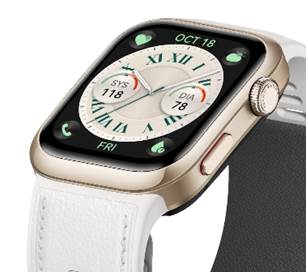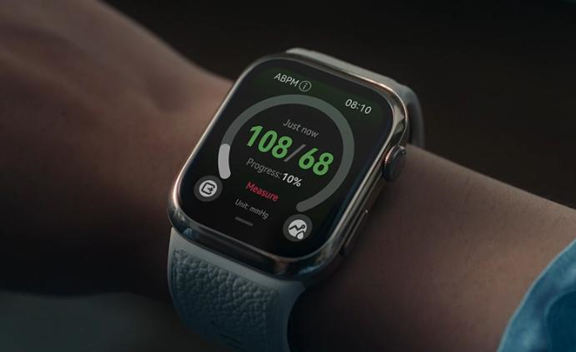Smartwatches
have evolved far beyond simple step counters, yet many users barely scratch the
surface of their potential. These devices now offer advanced health metrics,
personalized coaching, and deep insights into fitness progress. However,
without proper setup and understanding, they often end up as glorified
notification screens. The real power lies in leveraging their data to make
informed decisions about workouts, recovery, and daily habits. Most people
check their step count or heart rate occasionally but miss out on actionable
insights. A smartwatch can guide you toward better sleep, optimized training
intensity, and long-term fitness improvements—if you know how to use it
effectively. In this article, we’ll explore practical ways to turn your smartwatch
into a true fitness companion.

Set Up for Success: Essential First Steps
Sync with Your Favorite Fitness Apps
A
smartwatch becomes far more useful when connected to apps that align with your
fitness goals. Many devices support popular third-party apps, allowing seamless
data sharing for runs, cycling sessions, or gym workouts. Syncing ensures all
your activity logs are in one place, making progress easier to track over time.
For runners, pairing with a running app provides detailed maps, pace analysis,
and performance trends. If you prefer home workouts, linking to a fitness app
can help tailor exercise plans based on your watch’s heart rate and calorie
data. Even general health apps can consolidate sleep, steps, and heart rate
information for a holistic view of your wellness. The key is choosing apps that
match your routine. Some focus on guided workouts, while others specialize in
endurance training or mindfulness.
Customize Your Activity Goals
Default
fitness targets on smartwatches aren’t always realistic. If your daily step
goal feels discouragingly high or your calorie burn target seems unattainable,
you’re less likely to stay motivated. Instead, adjust these goals based on your
current fitness level and gradually increase them as you improve. Start with
small, achievable milestones—like adding 500 steps to your daily average or
extending workout time by five minutes weekly. Many watches let you customize
goals for different activities, so you can set separate targets for walking,
swimming, or strength training. This flexibility keeps challenges manageable
while encouraging steady progress. Heart rate zones are another customizable
feature. If weight loss is a priority, setting alerts for fat-burning zones
ensures you train at the right intensity.

Workout Tracking That Actually Helps
Simply
starting a workout session on your smartwatch isn’t enough—interpreting the
data afterward is where real improvement happens. Post-workout summaries show
metrics like average heart rate, pace, and active calories burned. Reviewing
these helps identify patterns, such as whether you’re pushing too hard or not
hard enough. For cardio workouts, pay
attention to consistency. If your heart rate spikes and drops erratically, you
might need to work on pacing. For strength training, rest intervals between sets
matter just as much as reps. Some watches estimate muscle recovery time,
helping you avoid overtraining. GPS tracking adds another layer of usefulness
for outdoor activities. Analyzing route elevation and split times reveals
strengths and weaknesses in your performance. Over weeks or months, this data
highlights progress that might otherwise go unnoticed.
Recovery & Health Insights You Should Use
Analyze Sleep Data for Better Rest
Sleep
tracking is one of the most underutilized smartwatch features. Beyond just
counting hours, advanced sensors break down sleep into light, deep, and REM
stages. Consistently short deep sleep phases might explain daytime fatigue,
while frequent awakenings could indicate stress or poor sleep hygiene.
Use
this data to adjust bedtime routines. If your watch shows you’re restless after
caffeine or late meals, experiment with cutting them out. Some devices even
suggest optimal bedtimes based on your sleep patterns. Over time, small tweaks
can lead to more restorative sleep—and better workout recovery.
Track Resting Heart Rate & Stress Levels
Resting
heart rate (RHR) is a silent health indicator. A consistently high RHR may
signal overtraining, illness, or chronic stress. Conversely, a downward trend
often reflects improving cardiovascular fitness. Checking this metric weekly
helps gauge overall health beyond workouts. Stress tracking, often measured
through heart rate variability (HRV), is equally valuable. If your watch flags
prolonged high stress, techniques like breathing exercises or walking breaks
can help. Balancing stress and recovery ensures workouts are effective instead
of counterproductive.
Motivation Hacks That Work
Fitness
progress isn’t linear, and motivation wavers. Smartwatch features like
achievement badges, reminders to move, or virtual challenges with friends add
accountability. Even subtle vibrations nudging you to stand up after sitting
too long can reinforce healthy habits. Setting milestone rewards—like a new
workout outfit after a month of consistent runs—pairs well with watch-generated
progress reports. Seeing tangible proof of effort, like a 10% endurance
improvement, fuels long-term commitment.
Avoid Common Mistakes
Ignoring
recovery metrics is a major misstep. Pushing through fatigue because you’re
fixated on daily goals leads to burnout. Similarly, obsessing over calorie
counts without considering nutrition undermines results. Use your watch as a
guide, not a dictator. Another mistake is skipping software updates. New
features often include better health algorithms or battery optimizations.
Regular updates ensure your data stays accurate and useful.
Conclusion
A
smartwatch is only as effective as how you use it. By syncing the right apps,
customizing goals, and paying attention to recovery, you can transform it from
a passive tracker to an active coach. Small, consistent adjustments—like
improving sleep or balancing workout intensity—compound into significant
fitness gains over time. If you’re considering an upgrade, Huawei leads in
innovation with advanced health monitoring. The HUAWEI WATCH d2 offers precise fitness tracking, making it a strong choice for
those serious about improving their health. Whether you’re a beginner or an
athlete, the right smartwatch can be the ultimate fitness ally.



